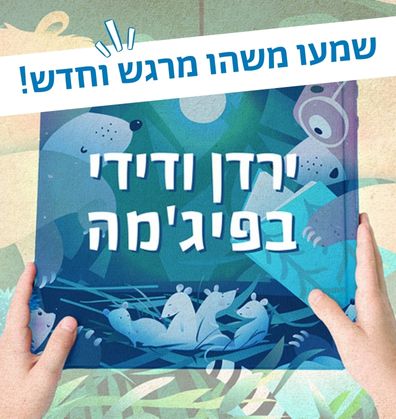סְּפָרִים
Book-Related Family Activities

One “Language” at Home – Another in Kindergarten
This book exposes children to an exciting period in history, and invites a discussion of their feelings in day-to-day situations. You can discuss with your children and ask: Why was Milka concerned and indecisive on the night before Baron de Rothschild’s visit? What do you think of the choice she made? Are there rules in kindergarten that differ from the ones you have at home too? Which ones?

How Do We Say it in Hebrew?
to the page containing the words that Mr. Yudilovitz, the teacher, sent to his friend, and try to pronounce them, or even use them in a sentence: “Can you pass me the Handtuch, please?” How about thinking together about all the non-Hebrew words we use in our daily lives and what their Hebrew alternatives are? You can try to invent new Hebrew words together too.

Looking for the Donkey
Have you noticed the grey donkey that appears in almost every illustration? The illustrations in this book are full of details, color, and text. You can pause on each page, look at the illustrations, and discover the things that interest you, while searching for the little donkey that accompanies this entire story.
Listen to the Story
Would you like to hear Milka speak Hebrew? Scan the code and listen to this book on the Sifriyat Pijama podcast.

Who am I?
“You mimic animals so much that you don’t know how to mimic yourself”, says Shumdi to Arik the lion. You can discuss the things that make each of you special: your voice, body movements, hobbies, favorite food – and what else?

Mimic & guess
Much like Shumdi and Arik, you can also take turns making animal sounds, and having your family guess which animal you were trying to mimic. You can also add the sounds made by objects, and try to mimic the sounds of rain, wind, or any mode of transportation. You can record the sounds you make too, listen to them one at a time, and try to guess which of your family members made it.
Favorite stories
Anat especially likes the stories told by Shumdi the rabbit. Which stories are your personal favorites? You can look for and recall stories that the kids liked when they were infants, as well as well-loved stories that you have not read in a while, put them all together, and read one of your favorite stories whenever you feel like it.
Family reading advice
“Just me!” – Toddlers like to feel all grown-up and independent, as if they too are adults. While reading a book together, you can enjoy sharing with your toddler and strenghtening their sense of capacity: They can hold the book, point, say words they recognize, and even read the book to you or to one of their toys.
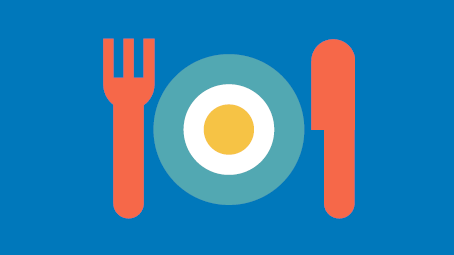
Challa recipe
The pictures in this book help you see the challah-making process, and understand the various stages. You too can make a dish together and photograph the process of its preparation. That way, you can be reminded of preparing it, look at the pictures together, and take pride in the delicious result.
Challa recipe
Dough:
1kg of flour
½ a cup of sugar
2 spoons of yeast
2 cups of lukewarm water
½ a cup of oil
2 eggs (optional, you can also make it without eggs)
1 spoon of salt
An egg for brushing or some oil
Method:
- Mix the flour, sugar and yeast in a large bowl.
- Add the rest of the ingredients and knead well for about 10 minutes until the dough becomes elastic and soft.
- Cover the bowl with a towel or plastic bag and leave the dough to rise until it has doubled in volume.
- Use the dough to make challahs. You can make them large or small. You can brush the challahs with egg or oil.
Bake in an oven set to medium heat for half an hour, until the challah turns golden. Enjoy!

Discussion – What is in the picture?
You can look at the pictures together and discuss the details in them. You may want to ask questions such as: Where is the girl? What are the children doing? Where is the broom? Where is the challah? You can return to an image you have already looked at from time to time, and who knows – perhaps you will discover some additional details?
QR code
Scan the QR code and learn about tips on ways to celebrate holidays and special events together with toddlers.
Reading poems
The poems in this book present small moments in life. Every time you read together, we recommend selecting one poem, and reading it together. Does the poem remind you of something that once happened? This may be a good opportunity for you, parents, to share a childhood experience with your child, creating closeness and intimacy with them.
Pleased to meet you – Hagit Benziman
When did Hagit Benziman start writing? What does she write about, and why? You may want to scan this QR code to find out more about this author and her work.
Looking through the family album
You may enjoy looking at parents’ family photo albums together, searching for special childhood moments. You could also look at early childhood photographs of the children, and share information about the moments captured. Which memories do they evoke in you?
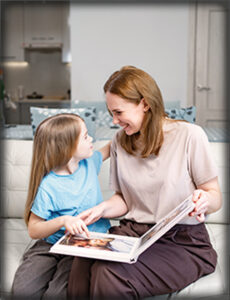
Dramatizing together
Do you have a favorite poem among those included in this book? If so, how about acting it out together, with the grownups playing the parts of the children, and vice versa.
A discussion about my name
Excuse me, what is your name? You may enjoy discussing your names: Why were you, parents, named so? And what has made you choose the names you have chosen for your children? Do you have any nicknames? How did you come by them?
Moving along with Yoyo
Yoyo jumps, sits, climbs… Each illustration depicts Yoyo in a different posture. You may want to act out what Yoyo does, and have the rest of your family members look for the page in the book that shows him in the same position. Were you able to do so? Then it’s time for another member of your family to have a go.
I’m always me – Datia Ben Dor
Are you sometimes happy and at other times sad? So is Datia, who wrote the book, and also wrote the lyrics of the well-known children’s song I’m Always Me, the music of which was composed by Uzzi Hitman. Scan the QR code and sing along!
Arts & crafts – A front door sign
How about getting the following – a cardboard rectangle, crayons, stickers, and some plasticine, if you like – to make a sign for your front door or bedroom door? Write your name at the center of it, color it, decorate it, and hang it on the door! And how about this idea – print out a photograph of yourselves, add it to the sign, and write your names too.
Pinterest
Find more inspiration and creative activity in our Pinterest page
A discussion on our house
All houses consist of walls, a roof, doors and windows: What’s special about your house? What makes it your home? You may want to discuss special objects and items found in your home, or the things you do there together.
A video – House of boxes
What can you do in a house made of boxes? Scan to QR code to get ideas for a house that’s both real and imaginary.
Arts & crafts – Home building
How about making a house out of blankets, cardboard boxes, sticks and clothespins? And what else would you need? Decide on a location and workplan, gather the necessary items and accessories, and off you go!
A game of house catch
Take turns announcing a topic and having all the other players try to work together to find a suitable item. For instance, when “red” is announced, all players must search the house for a red item. In the next round, another player might call out “big”, “small”, “cute”, “old”, “multicolored”, “annoying” or “wheel”, sending the other players to look for an item matching their announced topic.
פינטרסט
Pinterest
Arts & crafts, songs and other activities are available on the Sifriyat Pijama Pinterest
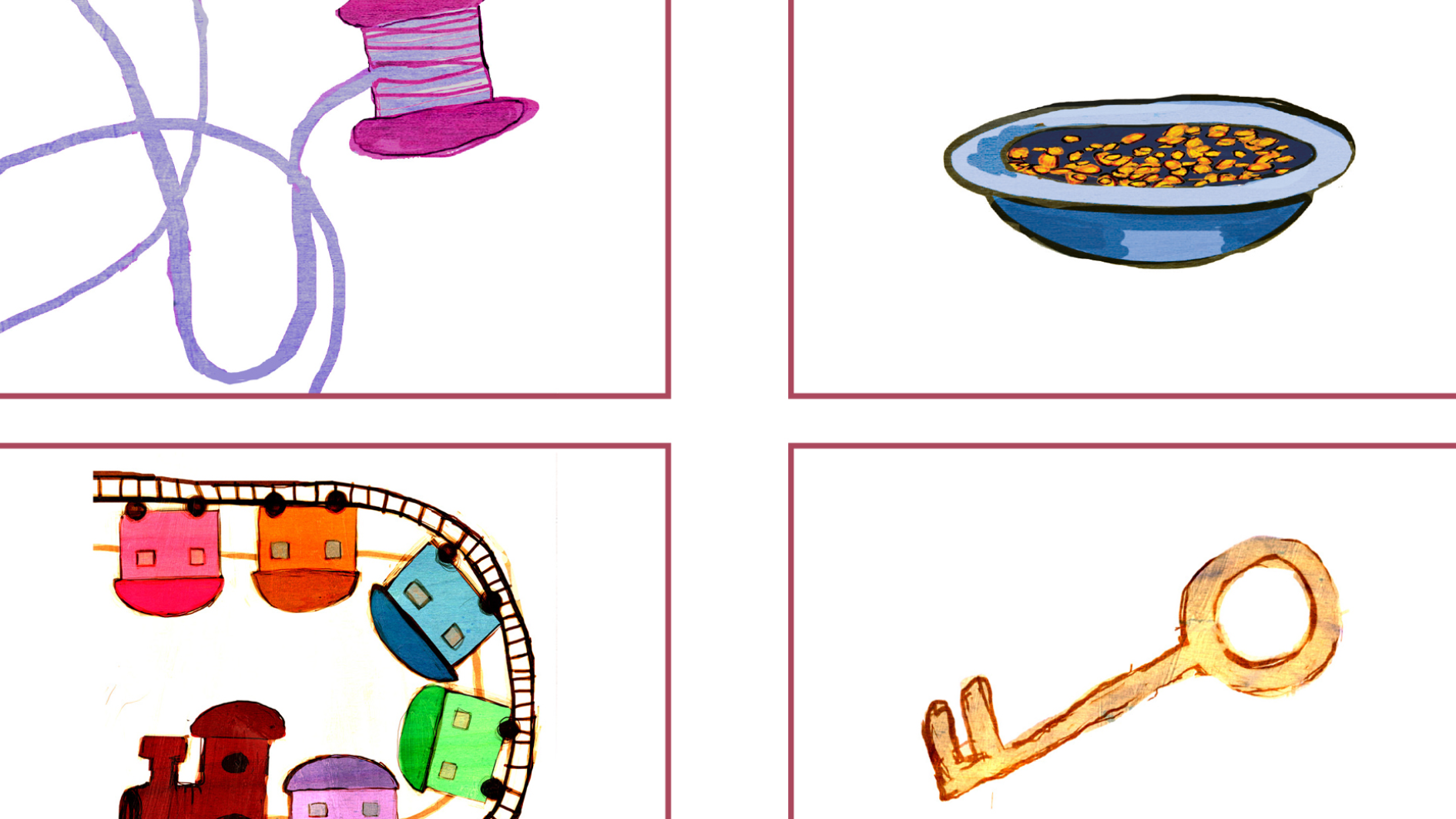
Reading Together
It is worth sharing the reading of the story with the toddlers: Where is the key? What do you do with the string, and what are the crumbs for? What surprise is hiding in the small pocket?

Guessing Game
Hide an object in a garment pocket and let the toddler guess what you hid with the sense of touch. You can provide clues, reveal a fraction of the object, and eventually disclose the item and demonstrate what it is used for.

Doing Things Together in the Family
Grandfather and the child are talking, sowing seeds, and feeding the rabbit. What do toddlers love to do with adults in the family? With grandparents and other family members?

What Goes with What?
“A key in order to open”; “A ticket to ride the train”; and what is a basket for? Or a spoon? You can walk around the house and choose items, then talk and check together what they are called and what they are used for. Matching Game –What Belongs to What – is waiting for you when you scan the code:

Pinterest – Crafts, songs and other activities on the “Grandpa’s Pockets” book page in Sifriyat Pijama on Pinterest
Reading together
While reading, it is useful to include the hands on each page, follow their path and imitating their movements. Parents and toddlers can do this together: “walk” the hand on fingertips, make the hand jump, knock on the door in the picture, and be active readers throughout the entire book.
Hand Games
It’s so much fun to play with hands! Each and every one in turn makes a certain movement, and the rest of the participants imitate it. You can clap your hands, wave hello or goodbye, signal for “quiet” or fly!
A Family of Hands
Who has a small hand? Who has a large hand? Each family member is invited to place their hand on a sheet of paper. You, the parent, will draw the contours of the hands, and the toddlers will decorate and paint. The picture of all the hands can be kept as a memento, and you can also repeat the activity year after year and see what has changed.
Singing Hands
You can sing songs accompanied by hand movements, such as “I have ten fingers” or “My hat has three corners.” It’s a good idea to add hand gestures to your singing, and you can add finger movements to other favorite songs. Have fun!
“עשר אצבעות לי יש” מאת רבקה דוידית
מחרוזת שירי ידיים מאת דתיה בן דור
Pinterest – Crafts, songs, and activities in the Sifriyat Pijama’s Pinterest page.
We can help too!
What can toddlers do at home? Many things! They can put glasses on the dining table, sweep with a small broom, feed the pets, and… offer cookies. It is worthwhile to talk and show what the toddler is helping with at home, and what else they want and can participate in.
Who is in the family?
The child in the story hands out cookies to other family members: grandmother, uncle, sister, cousin. Who are your family members? You can talk about family members, say their names and thier roles, such as: “Grandma Braha,” “Uncle Baruch,” use family photo, and use family photos.
Let’s make some refreshments together!
You too can prepare refreshments together, such as chocolate balls, a plate of fruit, or a sliced cucumber. You can prepare “pretend” refreshments using play dough and offer to the dolls at home.
Game: Grandma had cookies…
Do you know the game “Grandma made porridge”? “The child had cookies” can be played in a similar way, in which the toddler opens her, or his hand, and the parent begins to count: “The little boy/girl had cookies and gave one to Grandma (holding the thumb), and one to Uncle (holding the forefinger) etc. And so you count the fingers by allocating a family member to each one. Who will you give the last cookie to?
Discussion
Nuri and Grandpa spend time together, and it’s nice. You may want to discuss and discover the following with your children: What do they like doing with their grandfather, grandmother, or other family members? Is there anything that they wish to learn from them? Perhaps they have a question that they wanted to ask and were too embarrassed to do so?
Looking at the illustrations
Which treasures can be found in Grandpa’s cave? You may want to look at the illustrations and think about how they ended up being buried in the ground, and to whom they belonged. You could also imagine what might be hidden in the ground underneath your own home.
Introducing the mole
What is a mole? Moles are rodents living in underground burrows. The shape of their bodies is suitable for living in burrows as it is long and cylindrical. The moles’ touch and hearing are evolved, and they eat plants that grow in the ground. If you want to know more, please look for information on moles online.
You could also be a mole for a day!
Make a tunnel out of sofas, bed sheets or pillows, go into it carefully and crawl out. You could also turn off all the lights at home, and use a flashlight to go left, right, backwards and forwards, overcome various obstacles and… reach your destination!
What's the question?
You may enjoy playing the following game and finding out what happens when we answer before we ask: One player says an answer, and the other players try to guess what the question was. for instance, the answer “My name is Nuri” will be met with the question “What’s your name?”. Which questions match answers such as “I’m five years old” or “a purple monster”?
Discussion
Matan piles the sand up and makes his pile more sophisticated all on his own. having read this book, you may want to discuss actions with your child that they take without needing any help, and compare them with actions they had taken in the past. We recommend that you, parents, share your own similar experiences with them, from your own childhood: What is it that you wanted to accomplish, and indeed did? What does your child want to build and do? Do they need materials or help? You may want to decide on a family initiative to build, make or fix something together. Good luck!
The sands of time
What can we do with sand? We could make an imprint of our feet in it, and observe our family members’ different footprints. How about using twigs to draw in the sand, or piling it up, or going outside to look at different prints left in it there?
Perspective
The illustrations in this book were made from various perspectives: from above or below, from high up or far away. Looking at the world from different perspectives – high or low – allow us to discover surprising things: try looking at your room from an ant’s height; through binoculars made from toilet paper rolls; using a magnifying glass, or when standing on a chair: What can you see from that perspective that you couldn’t see from your regular angle?
Imagining and building
Matan and his sandcastle could inspire you to imagine, plan, and create too: close your eyes and imagine, then share your idea with your family, look for suitable materials, and start to build together. It could be a machine made out of boxes, a car made out of sand, a flying castle made of pillows, or perhaps something else entirely.

Just before bedtime...
How do you get ready for bed? What helps you fall asleep? You can talk about it together and think about creating a set ritual that will engender calm, and let you share the day’s experiences and thoughts that come to mind.

My notebook of thoughts
Isn’t it lucky that there’s a way we can remember our thoughts and stop them from getting away? How do we do that? Keep a notebook and pencil by your bed, and just before falling asleep, before your thoughts scatter away, draw them. You can color in your drawing in the morning, because now… is time for bed.

It's lucky that... It's good that...
“It’s lucky that a pot has two handles, and not five… if it did, how would we hold it?”, “It’s good that the windshield is made out of glass, not cardboard”. What do you imagine? Which things make you happy just as they are? Each member of the family can bring a certain object and talk about it: “It’s lucky that…”, “It’s good that…”.

Melodies, sounds and colors
The world is filled with melodies and sounds. Which melody do you like? Try singing a favorite melody together wile clapping your hands, moving parts of your bodies, singing, or playing instruments.
The world is also filled with diverse colors and shapes. You can draw as you listen to the music. Which shapes and colors will you choose for your drawing?
Getting [into] the picture
Would you like to go into one of the illustrations in the book? You could choose to be a guest at the home of one of the families described in this story, and imagine how it would feel to be next to the whale, or in the kangaroo’s pouch. What would you want to happen when you meet some of the characters depicted in the illustrations?
Guessing the animals
One family member can make the sound of an animal, or draw a picture of it, imitate it, or give some other kind of clue about it – and the rest can try to guess which animal they were hinting at!
Sound – imitate the sound made by this animal
Pantomime – act the animal out, walk like it or try to look like it
Picture – show or draw a small part of the animal: a tail, wing or foot.
Clue – describe some detail about the animal: where it lives, what it looks like, or the sound it makes.
Couldn’t guess? Help each other by providing additional clues.
Discussion – Parents ask "why?"
What sort of questions would you like to ask, and of whom? This may be an opportunity for both parents and children to share the questions that interest them the most. You could also raise questions that you would have liked to ask Shu the Vixen and Tut the Snail.
Being creative – The question box
What can we do with all the questions waiting to be answered? How about preparing a special question box, decorating it, and filling it with all the questions you find so intriguing. You could write them down on some notepaper and put them into the question box. Anytime you like, pick one, and look for the answer together.
Question games
Why at home? – Go around the house collecting “why?” questions about everything you encounter.
Questions about friendship – inspired by Tut and Shu’s friendship, you may enjoy asking: What do you think about Shu’s friends’ behavior? Has a friend of yours ever gone far away, or have you ever left a friend behind? Who were your parents’ friends when they were younger? What did they play or like to do together? What does your child like to do when their friends are around?
Questions about pictures – You may want to look at a picture together, and try to think of as many questions as you can to ask about it. You could then go out searching for the answers to your intriguing questions. You may even enjoy challenging yourselves, and looking for questions to an answer you already know: look at the picture (for instance: a gift, blue, moon), and instruct your child to think of a question to which this detail in the picture is the answer.

Songs and thoughts
The Sixteenth Sheep is an anthology of songs and stories that one can read one after the other, or select one at a time, according to the season, particular experience, or one’s mood. Could you write a song or story together about an everyday experience of yours? How about adding another verse to one of the songs found in the book?

That's happened to me too
While reading, you may want to discuss and examine the thoughts and feelings that emerge within both younger and older readers following the song. Does it remind you of experiences you have had? Parents, you may enjoy sharing your feelings and experiences nowadays and as children with your child.

When I grow up, I'm going to be a singer
Many of the poems in the book have become songs, and this may be a wonderful opportunity to listen to them, sing them together, and enjoy the tunes composed by Yoni Rechter and other musicians. You could record yourselves singing together, play along as you sing, or add a dance routine to your favorite songs.
When I grow up, I'm going to be a painter
Inspired by your favorite songs, you could be artistic in many ways: you could paint the green man using several shades of green, draw yourselves from the back, take a photo of a kindergarten when it is closed, or create the sixteenth sheep using cotton wool. When you have finished, you can show your work and ask: which song or story has inspired me to do this?
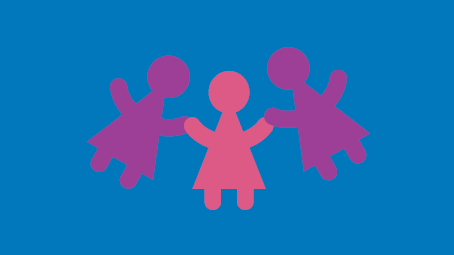
When I grow up, I'm going to be a painter
Inspired by your favorite songs, you could be artistic in many ways: you could paint the green man using several shades of green, draw yourselves from the back, take a photo of a kindergarten when it is closed, or create the sixteenth sheep using cotton wool. When you have finished, you can show your work and ask: which song or story has inspired me to do this?
Discussing – Friendship
Children yearn for friends and a sense of belonging, and the story about Arfy introduces this subject with all the complexities and heartaches that are sometimes associated with it. Yet Arfy has inner strength, and he chooses his own fate: his story allows us to hold a sensitive discussion about friendship, and the roads leading to it. You could, perhaps, ask your child what, in their opinion, is the reason for Arfy’s letters to different people. Would you have wanted to be Arfy’s frieds? Why? What would you have done in Arfy’s place?
Story-telling illustrations
Many pages in this book contain text-less illustrations demonstrating Arfy’s feelings. What do these illustrations tell us? Which of them make you smile, and why? What is Arfy feeling? What is he thinking?
Letter writing
You may be inspired by the letters in this book to write notes to one another. You could hide letters with encouraging or amusing messages under your pillow, in your bag, or anywhere else, and enjoy surprising your family members with them.
Treating animals well
Each of us can open our eyes and hearts to the animals around us – providing them with water on a hot day, setting up shelters, or anything else that would contribute to their wellbeing, and have a positive impact on the world in which we all live.
Reading and Discussing
You may want to tell one another some riddles you know, or share how you have found solutions to problems, situations and issues. Have you ever learned something by watching someone else? Perhaps you could ask other members of your family how they cope with riddle- and problem-solving. Together, you can create a collection of family suggestions to learn about and engage in problem-solving.
What do the illustrations tell us?
The illustrations in this book are extremely detailed. You may enjoy taking a close look at them, and telling one another what else they convey, beyond the text: Are any characters featured in them that are not described in the story itself? Perhaps you could follow the tiger character, and tell the story from its perspective: What is the relationship between the tiger and princess? Why does it follow her, and how does it experience the events that unfold?
Inspired by folktales
Authoress Ruth Calderon was inspired by an ancient folktale written by Rabbi Nachman of Breslov when she wrote this book. You could try it too! Think back to your favorite folktale or fairytale, and write a similar story about a contemporary boy or girl.
Comfort food
Do you also have a “ma’atzube” of your own – some kind of favorite comfort food? How about making a list of comfort foods, and then cooking or baking one together?
Problem-solving
“… Problems are just like bread – you need to slice them”: You may want to create a collection of everyday problems, and write them on pieces of paper. In each round, pick one note, and think of solutions together. They can be incremental, broken down into stages like slices of bread. Perhaps they can lead you to more suggestions.
Discussing – What can we see out of our window?
What can you see out of your window? What can you only see in your home? Can you see it through the window? What else makes you special as a family? Do you have a favorite song, or an activity you like to do together? Is there a fixed ritual on special occasions in your family, or something that will always make you all laugh? Perhaps there is a phrase or word that you have invented, or a word with a special meaning, that only your own family members understand? What is missing from your family that you wish to add? Something that would be seen through your window – a character, object, or animal? Perhaps something on which you could play a song?
Playing – it's me!
Who is this child? And who is this adult? – You may want to play a family game for boys, girls, adults, and children:
In each game round, a member of your family will think of one of the participants, and describe them indirectly. For instance: “The child I have in mind likes to play ball”, or: “The person I have in mind likes to drink coffee in the afternoon”. After the participant is described, everyone has to guess who the child or adult the player is thinking of is. You could also add friends and relatives with which all participants are familiar that are not physically present.
Proposed Family Activities:
- You may want to leaf through the book and look at the illustrations together. What can you see out of Shusha’s bedroom window? What can you see out of your child’s bedroom window?
- Shusha dreams of being a famous painter. Perhaps you could discuss each of your family members’ talents and dreams.
- Shusha has the best time at her grandmother’s. what does your child enjoy doing with their grandparents or uncles and aunts? You may enjoy discussing the uniqueness of their relationship with each member of your extended family, and plan the next time you all get together.
- Drawing on walls, as Shusha does, is usually prohibited. You could, however, put a large sheet of paper up on a wall or door to draw on. Perhaps you could add details over time to gradually create your very own family wall painting.
- Shusha waves, and the sheep follows suit. You may want to use chalk to outline your child’s shadow in your backyard or on the sidewalk, and return an hour later to the same exact spot, to see how their shadow grows longer and moves in tandem with the sun.
- Shusha sees a black sheep in her shadow. Perhaps you could turn off the main lights, and turn on a small lamp to check what kind of shadows form on the walls when we put our fingers or various items between the small light and the wall.
- How about visiting an art exhibition at a gallery or museum with your child? Discover which paintings you like best, and whether you and your child have similar taste. You could even pick one or two of your favorite pieces, and learn some fun facts about the artists that painted them.
Proposed Family Activities:
- You may want to look at the illustrations together. Can your child find Rosie (Hadsas) among her classmates in the first illustration? What kinds of inventions did Rosie’s (Hadas’) friends make? Do you have a particular favorite? What is special about it?
- Perhaps you could make a list together of things that you have tried and failed, and another of things you have not yet tried, and would like to try some day. Could you maybe make it if you worked together?
- You may enjoy inventing, planning, and building your own “gizmo” together using building blocks, Legos or Playmobile. Your invention may consist of other items found in your home or backyard.
- Do you or did you also have a meaningful aunt with a vision who has left a mark on your childhood? You could look for photographs of her, and tell your child about her.
- You may want to compare the responses of Uncle Fred (Zvi) and Aunt Rose (Hadassah) to Rosie’s (Hadas’) inventions. Perhaps you would enjoy thinking of sentences or phrases that family members say to cheer one another up. You could write them down on pieces of paper, and put them in various places around the house.
- Young children often have excellent ideas and original thoughts. You could tell your child about a great inventor, in Israel or elsewhere, and remind them that s/he too was once a child brimming with ideas.
לערוך יחד רשימה של דברים שניסיתם והצלחתם
תוכלו לערוך יחד רשימה של דברים שניסיתם והצלחתם, ודברים שעוד לא הצלחתם לעשות ושאתם רוצים לנסות בעתיד. אולי אפשר להצליח בכוחות משותפים?
לבנות יחד "פטנט" משלכם
תוכלו להמציא, לתכנן ולבנות יחד “פטנט” משלכם ממשחק הרכבה כמו קוביות, לגו או פליימוביל. אפשר לשלב בתוך ההמצאה שלכם חפצים שונים שתמצאו בבית או בחצר.
דודה משמעותית ובעלת מעוף
האם גם לכם יש או היתה דודה משמעותית ובעלת מעוף שהשאירה חותם על ילדותכם? תוכלו לחפש תמונות ולספר עליה לילדיכם.
כדאי להשוות בין תגובת דוד צבי לתגובת דודה הדסה
כדאי להשוות בין תגובת דוד צבי לתגובת דודה הדסה להמצאות של הדס. אפשר להמציא יחד משפטים או ביטויים שבני המשפחה אומרים זה לזה כשמישהו זקוק לעידוד. תוכלו לכתוב על גבי פתקים מילים ומשפטים מעודדים ולפזר את הפתקים ברחבי הבית.
לילדים צעירים יש רעיונות גדולים
לעיתים קרובות לילדים צעירים יש רעיונות גדולים ומחשבות מקוריות. אפשר לספר לילדיכם על ממציאים גדולים, בארצנו ובעולם כולו, ולהזכיר שגם הם היו פעם ילדים שופעי רעיונות.
גם איינשטיין נכשל:
גם איינשטיין נכשל: למה חשוב ללמד על כישלונותיהם של אנשים מעוררי השראה – הגיע זמן חינוך
https://www.edunow.org.il/edunow-media-story-254706
מאמר באתר מכון דוידסון
החוקרת שפענחה את סוד החיים – מאמר באתר מכון דוידסון על פרופ’ עדה יונת
https://davidson.weizmann.ac.il/online/sciencehistory/—-
מה מסתתר מאחורי סיפורה של הדודה הדסה
מה מסתתר מאחורי סיפורה של הדודה הדסה: “אנחנו יכולות לעשות את זה!” מכריזות הדס והדודה הדסה – דודה הדסה בנתה מטוסים כשהיא לבושה בבגדים כחולים ולראשה מטפחת אדומה מנוקדת בלבן. הכרזה נוצרה בזמן מלחמת העולם השנייה בארה”ב במטרה לעודד פועלות בתעשיות שסייעו למאמץ המלחמתי. בשנת 1982 זכתה הכרזה לגילוי מחדש בכתבה של הוושינגטון פוסט. היא נפוצה והפכה לסמל מחודש של עוצמה ויכולת נשית. עוד על סיפורה של הכרזה בערך בויקיפדיה We Can Do It!
https://he.wikipedia.org/wiki/We_Can_Do_It!
Proposed Family Activities:
- You may enjoy looking at the amusing illustrations together: does the cat really seem not to be nice? Is something bothering it? When is it happy and content? Look through the book and make up new stories about the illustrated cats.
- Which pets do you prefer, cats or dogs? Perhaps you like both. Do you think the author of this book likes cats? Now that he has shared his positive judgement of them with his readers, do you think he likes them more?
- Perhaps you could go for a cat walk in the neighborhood together. Every time you come across a cat, try to guess how it feels, and make up a story about it. When you return, you could ask your child to make an illustrated book entitled Why our Neighborhood Cats are Nice.
- You may enjoy playing the “kind eye” game together: take turns throwing a ball of yarn to each other. Whoever catches the ball has to say something kind – a good quality or kind gesture – about the one who threw it. Try passing the ball around as many times as possible, until the room is filled with positive judgment, compliments, and love.
- How can we be nice to cats? Perhaps you could take an empty crate, line it with old fabric, and create a shelter from the sun and rain for stray cats.
Proposed Family Activities
- You may want to sit close together, read the story, and enjoy the illustrations. Which amusing details and play-on-words did you discover in the illustrations? Perhaps you could ask your child to tell you the story according to the sequence of illustrations.
- At the end of the book, the animals try on each other’s tails, wings and fins. What is each new animal comprised of? You may enjoy coming up with names for them.
- Somebody is jealous of the other animals, and wants to be like them. Have you ever wished you were more similar to someone else? You may want to share those experiences with your child. Perhaps you could discuss the differences and similarities between your family members, what makes each of you unique, or unites you all. This may be a good opportunity to strengthen your child’s inner qualities, and encourage them to remain true to themselves.
- Perhaps you would enjoy acting the story out together. Using various fabrics and accessories, you could make wings, tails, whiskers and feathers. You may want to keep all the disguises and props in an easily accessible basket, and encourage your child to dress up as a different animal each time, bringing the various characters in the book to life.
- Do not judge a book by its cover: we are accustomed to describing people using their external features. Can you describe one another without referring to any external features? Was it hard?
- This book may inspire you to set up a “garage sale” with clothes, costumes, and accessories that are lying around your house. Invite family and friends over, and together you can play dress up, exchange items, and feel brand new.
- You may want to look for other books on dressing up at home, in kindergarten, or at the local library, and read them together. Books such as BrownStripe (Humpas) by Shlomit Cohen-Assif, An Egg in Disguise (HaBeitza Shehithapsa) by Dan Pagis, or A Very Honorable Coat (Tochal, Meil, Tochal) by Ronit Chacham.
What makes one a hero?
What makes one a hero? You may want to stop reading when Pat realizes he has no special powers. You could discuss Pat’s feelings with your child – what would they have told him right now? What could have comforted him? You may also wish to ask: Is not being a superhero that terrible? What sort of qualities might make one a hero? And who are your heroes?
Uniting and distinguishing:
Uniting and distinguishing: Which qualities do members of your family share, and which make each of you special? What distinguishes your family from others? You could discuss this with your child, and ask them to draw two pictures: a family portrait highlighting common traits, and another emphasizing each family member’s uniqueness.
Make believe:
Make believe: Many children enjoy playing with superhero action figures, and pretending that they too have special powers. You may want to join in on their game, taking an interest in the superpowers possessed by your child’s favorite characters, and letting your imagination run wild. If you also spent time playing superheroes as children, or reading comic books, you could tell your child about your childhood toys, books, and movies, and compare them with today’s superheroes.
Dressing up as superheroes:
Dressing up as superheroes: Perhaps you would enjoy choosing or inventing a superhero, and making a costume for your child – from head to toe, or just using a cape. What superpowers does the superhero you chose have? What are their special qualities?
Walking in the dark
Walking in the dark: Pat can find his way in the dark. Can you? You may want to turn off all the lights, and walk from one room to the other holding hands. Feel your way around, and rely on your knowledge of your surroundings. After several times, you could allow your child to lead you.
Interesting animals
Interesting animals: You may enjoy reading the fun facts about bats printed on the last page of the book together. Did your child know bats shared these characteristics? You may want to visit a petting zoo, zoo or pet store, look for information online or at the library, and prepare a similar page about a different animal.
The illustrated story
You may have noticed that the illustrations tell a slightly different story than the text in this book. You may enjoy looking at the illustrations together, comparing the text and image on each page, and asking: what is happening in kindergarten while the boy tries to fly? Who is the fairy eating with, and who is the knight? Perhaps you could make up a new story based only on the illustrations. What are the differences between your story and the one you read in the book?
Dressing up as superheroes
Dressing up as superheroes: You may enjoy making a cape, wand or wings, just like the ones the boy and girl have in the book. You could act the story out, and head off on your own adventures. Perhaps a cat in the backyard, a crying infant, or someone in your family needs help? If you join forces with one another, you just might be able to “save” them.
Who saved whom?
Who saved whom? You may want to read the end of the story again. Who, in your opinion, saves whom? Have you ever helped a friend in need? Has anyone ever “saved” you? Maybe you would like to imagine the little girl meeting her parents at the end of the school day, and the conversation they might have. You, the little girl’s parents, might ask: “How was your day in kindergarten?”. Later you may enjoy thinking up a similar conversation between the boy and his parents.
Make-believe
Make-believe: Many children enjoy playing with superhero action figures, and imagining they too have super-powers. You could join them as they play, express an interest in the super-powers of your child’s favorite character, and let your imaginations run wild. If you also pretended to be superheroes when you were a child, you could share those memories with your child, and compare your childhood superheroes to today’s characters.
Sometimes alone, other times together
Sometimes alone, other times together: You may want to look through the book and find the times when the boy and girl prefer to be on their own, and the times when they enjoy playing with others. Perhaps you could share with one another: what sort of things do we enjoy doing on our own, and which do we prefer to do together? Following your talk, you may want to think of a new fried and invite them over to play at your house.
We are all superheroes
We are all superheroes: You may enjoy using your imagination together. You could think of various situations in which our imagination would help us in our everyday lives, and ask questions such as: “If I were as tall as a giraffe…”, “If I could fly high up in the sky…”, “If I could be in two places at once…”. You may want to draw these imaginary situations, and make a scrapbook entitled If I were a Superhero.
Proposed Family Activities:
- You may want to read the book over together several times. You could stop on each page and ask your child: “What will George do?”. Your child could repeat the phrase “Oh no, George!” out loud.
- Perhaps you may enjoy using a stuffed animal or making a simple puppet with which to act the story out together. You could walk around the house with it, looking for various “temptations”. What will your stuffed animal or puppet do in each room? How will it behave? Will it manage to restrain itself?
- You may like to leaf through the book together, looking for various items in the illustrations, such as the cake, cat, or flowers. How many times does each of them appear in the story?
- This story describes George’s contention with the things he is not allowed to do. But surely George does some things he is allowed to do as well! You may want to think together of some of the good things George likes to do, and invent your own story, entitled Oh yes, George!
- The book ends with the question: “What will George do?”. Perhaps you might like to tack on a different ending to the story together.
Did you know where the name Sabich originated before reading this story?
What do you know about your own family members’ names? Are they biblical? Are any of you named after a relative? Perhaps, like Sabba Sabich, your name or your child’s comes from a foreign language? You may want to discuss your names, their origin and meaning together, and tell your child what made you choose their name for them. Perhaps your child would enjoy making a decorated sign with their name on it, and hang it on their bedroom door.
Sabba Sabich came to Israel from Iraq. Where did your family come from?
How long has your family been living in Israel? Which country did it come from? Perhaps you could make a world map, and draw arrows on it denoting the path travelled by your family until their arrival in Israel. You may wish to share your own immigration stories with your child, or those of their grandparents. What did you like about the country you came from? What do you like about Israel? What sort of hardships and successes did you experience? Has any member of your family changed their name upon arrival in Israel?
Sabba Sabich says each community brought with it "a language, songs, names, and traditions"
You may want to teach your child a few words in the language spoken by their grandparents. Together you could recollect special customs and songs, which you could teach and sing with your child. They could also read this book with older members of the family, such as uncles, aunts, or grandparents. Perhaps by doing so they will be told more family stories they had not heard before.
Do you make Sabich for breakfast?
Pizza, falafel, kreplach, Jahnun... Which dishes are typical of your community? You may enjoy preparing a special meal together consisting of dishes typical to your family’s place of origin. You could teach your child how to make traditional food, and even create a family cookbook.
Keren and Or in making Sabich together!
Ingredients for home-made Sabich
- Hard-boiled eggs
- Sliced, fried eggplant
- Finely chopped salad
- Pitta bread
- Hot sauce (Schug), Amchur (Amba) (optional)
- Hummus
- Tahini
Method:
Peel the eggs (ask your child to look for the description in the book!), place one pitta bread on a plate and put hummus on it, with or without hot sauce (schug) or amchur (amba). Add the eggplant, sliced egg, and salad.
Season with salt and pepper, and put a spoonful of tahini on top.
Bon Appetit!
Enjoy reading and discussing the book together!
Proposed Family Activities
- You may want to look at the special illustrations by Gilad Soffer The book looks a little like a comic strip. How easily did you read it out loud? Did you notice that the word “Shafan” on the front cover was struck through? You could perhaps discuss this line across the word. Was it a printing error?
- Comic books are for readers of all ages! They describe the plot in words and illustrations, forming a sophisticated technique that adds another level of meaning to the written words of the story. You may enjoy picking a well-known story, or make up your own, and create a comic book out of it together using speech bubbles. You could take a look at the parts of the book that are so illustrated, and discover what facial expressions, body language, and the use of colors tell us that we couldn’t have known just by reading the words. Notice, for instance, how content the magician looks, compared to the upset look on the rabbit’s face.
- Have you ever been mistaken for someone else? How did you feel? Perhaps you would like to share your thoughts, and think together what we could do to ensure others call us by our real names.
- This book is full of humor, and appeals to readers of all ages. Did both you and your child find the same parts amusing?
- Can you differentiate between a rabbit and hyrax? An eagle and vulture? An ostrich and emeu? You may want to make a “confusing animal dictionary” in which you write and draw the animals whose names we tend to confuse. During your next visit to the zoo, you’ll be sure to get them right. You could also make a card game, with pictures and names of animals that need to be matched.
- You may also enjoy making a hyrax and rabbit out of playdough, and use them to act the story out.
- Perhaps you could look for illustrated books at home or in the library that mention hyraxes or rabbits, and check whether the illustrators drew them accurately, or got confused.
- You may also want to discuss the rabbit’s feelings throughout the book. Why is he so offended at being called “shafan”? And why do you think he remains unhappy all the way to the end of the book?
Family Activities
- Notice the special illustrations in the book. Mommy and Yossi have various “accompaniers”. Which accompany Yossi each time he goes out? Which items “accompany” Mommy when is waiting at home? In your opinion, do you think there is any significance to the various “accompaniers”?
- Collage artist Liat Yaniv added to the song-story through rich illustrations, using the craft of pasting small pieces of colored paper. Young children, too, can prepare a picture by pasting pieces of paper. You can either tear or cut pieces from newspapers and journals and prepare from them a colorful
- Yossi found a harmonica and played for Mommy. You can prepare a harmonica from a comb and specially waxed paper for baking (in Hebrew, “pergament” paper): Cut the baking
paper to a width that is double the space of the comb, wrap the comb with it and blow. You may even want to create a “comb orchestra”.
- In what area or way is your child successful? It would be nice to create a medal on which is written “My Successful Son” or “My Successful Daughter”. Write or draw onto it something that the child has done successfully. You may also want to prepare a “Reward Note” about the successful things that the child did during the week, and to read it during Friday night
- “Educate a child in the way he should go”: You can discover a lot about your children if you follow after their “special steps”. You may want to join them as they engage in all kinds of entertaining and amusing activities, each following along “in the way” that he “goes”. For example, rules for various games, a dance that they invented and silly and funny songs that they made
- Are you familiar with the melody of the well-known song “Yossi, My Wonderful Child”? This is a fine opportunity not only for reading the story together, but also for singing it!
Activities You Can Do at Home
- Brownstripe envied the other animals in the forest. You might talk with your children about feelings of envy and jealousy, and share your own life experiences with them. Perhaps, when you were a child, you wanted to be like someone else? Do your children sometimes envy others? This is an opportunity to reinforce your children’s unique qualities and to encourage them to remain true to themselves.
- You might talk together about the saying, “Who is rich? One who is happy with his lot.” What does it mean for you? Is everyone in your family happy with what he or she has? What do we, as a family, feel happy about?
- People often say: “May all your wishes come true.” When Brownstripe gives voice to his wish, his wish is realized! You could ask your children if they, too, have wishes, or if they ever wished for something that came true. While the fulfillment of some wishes is not within our power, we can fulfill others. You can play a game together: each one takes a turn and makes a wish out loud. Be sure to focus on wishes that can be fulfilled (for example:” I wish I had a comfortable pillow under my head,” or “I wish I could curl up under a cozy blanket”). It’s natural to want things, and it also feels good to make someone else’s wish come true!
- You can put on a skit based on the story. Create a tail, antlers, wings and fins using fabric and simple props. Your children can pretend to beBrownstripe, who envies the other animals; you, the parents, can play the parts of the other animals. At the end of the show, you can have a great time playing the mother bear who hears and sees Brownstripe through his costumes. Be sure to share a great big “bear hug” as a finale!
- Brownstripe wants to have body parts that aren’t suitable for a bear. Each of our body parts has an important function. Together with your children, you could examine the illustrations throughout the book. Do your children know what the purpose of a lion’s tail is? Why do deer have antlers, and fish have fins? You can also go over our own human body parts and discuss the function of each.
- The book “Brownstripe” is one of many children’s books that deal with the desire to be like someone else – for example, “The Fish that Didn’t Want to Be a Fish” by Paul Kor (in Hebrew), “The Mixed-Up Chameleon” by Eric Carle and “A Color of His
Family Activities:
1. Noa is very attached to the old doll that her grandmother made for her, but also likes new dolls and toys. You can ask your children which dolls and toys they like in particular, and remind them who gave them the gifts and under which circumstances.
2. Mr. Minasa tried to get rid of his old shoes when he arrived in the new country. You can play an imaginary game with your children: If you were leaving for a faraway place, what would you take with you and what would you leave behind?
3. Like Grandmother Agarnesh, you too can craft a hand-made doll for your child, using old socks and clothing. You are invited to send us a photograph of the doll, which we will happily post on the Sifriyat Pijama website!
4. Mr. Minasa arrived in the new country from Ethiopia. Where did your family originate? This is an opportunity to share your personal immigrant story with your children, and show them photographs of the old country. Perhaps you too have old bjects or clothing that you can search for together.
5. Mr. Minasa’s neighbors recognized his old shoes and returned them to him. Did you ever find something and return it to its owner? Was the owner happy to receive the lost object?
6. You can act out the story with your children. Each one in turn takes on the role of Mr. Minasa and looks for places around the house to hide the shoes. The other player finds them and declares, “Oh, here are Mr. Minasa’s old shoes!”

Family Activities
You don’t have to stand on your head to see the world upside down! You may want to think together with your child what makes each of us different than others, even “upside-down” in relation to others (appearance, pastimes, opinions, talents, etc.)? How do your family members’ uniqueness and various perspectives contribute to the family as a whole?
You may like to think about the various characters together, and how each one reacts when they discover Shufon’s difficulty. Perhaps you would enjoy creating a dialog between two owls in different points along the book, and discuss with your child the change undergone by the entire owl community.
Sometimes what one person finds hard, another achieves with ease. In order to experience backward reading, you may want to write a word on a piece of paper and put it against a mirror. Look at the word’s reflection. Can you figure out what it says?
Following the story, you may enjoy having a reading ball at home! Each family member can bring their favorite book to the ball, and explain why they had chosen it. You can read the books together, relish the wordplay, and even feast on special refreshments (such as letter-shaped cookies or food associated with one of the books).
Wordplay:
You could look through the book and search for the blue words. Ask your child what sets them apart from the other words in the book, and why they think they were printed in a different color.
You may want to explain to your child that words that read the same left to right and right to left are called palindromes. You may like to think of other palindromes together (such as mom, dad, eye) and enjoy some wordplay.
Some of the words in the book have different meanings when read backwards. You may want to look for these examples and think of other words that create new words when read backwards.
ראיון עם המאייר אסף בן ארוש על תהליך יצירת הספר
ראיון עם המאייר אסף בן ארוש על תהליך יצירת הספר
Oded Burla [1915–2009]
Israeli author, poet, painter and illustrator, Oded Burla was born in Jerusalem to a Sephardi family who lived in Eretz Israel for more than 13 generations. His father, Yehuda Burla, wrote adult books and won many awards. Oded Burla attended the agricultural school at Mikveh Israel, followed by the Bezalel Art Academy. His first book was published when he was 45, and he since wrote and illustrated more than 70 children’s books, which, he claimed, contained 346 different animals! Burla was named the father of nonsense in Hebrew Children’s Literature. His humorous books are sophisticated and filled with surprising and amusing wordplay. Oded Burla has won awards for his work: the Zeev Award, ACUM Award and Bialik Award.
Family Activities
- How do we portray a melody? You may want to notice how illustrator Assaf Benharroch chose to draw the melody, and how it changes throughout the story. Perhaps you’d like to suggest that your child draw your melody together with you.
- Do you sing lullabies at home to your children? Do you remember a lullaby your parents sang to you when you were young? Share a lullaby you know with your child. You may want to renew this beautiful family custom, and sing together before bed.
- Do you know melodies that have no words? You may want to sing some with your child. To complete the experience, you may enjoy dancing together, and even making up your own words to this tune.
- Oded Burla wrote and illustrated many children’s books, among them A Smile in every Corner and Oded Burla’s Big Book. You may want to look for his works in the library or online, and enjoy reading them together.
- The plot of the story is straightforward and can easily be turned into a play. You may like to act it out with your child. Your child can play the part of the melody, and other members of the household can be the different characters in the book. You may want to add some more dialog to the story, in which the melody explains to the various creatures why they should sing.
- The mountain in the story has no need for the melody because “mountains don’t sing”; whereas the trees tell the melody: “We have our own songs”. According to Rabbi Nachman of Breslow, each blade of grass has its own song. By this he means that every creature in the world has a voice and melody of their own. Naomi Shemer wrote a beautiful tune to Rabbi Nachman of Breslow’s Song of the Grass. You may enjoy listening to it and singing along.
Activities to Do Together at Home
Spend some time looking at the illustrations together and recalling all the things that the girl in the poem loves. Ask your children what they love “the most in the world.”
Did anything in the illustrations make you laugh? In the poem, the girl drew a lion that came out looking more like a rabbit, so she called it her “rabbitlion.” You and your children could draw some imaginary animals and invent made-up names for them.
Accepting oneself does not mean having no aspiration to improve. Have a conversation with your children about the things in our lives that we need to learn to accept, and contrast those with the things that we could strive to change. Brainstorm together about something that you all would like to improve, and about ways to achieve that goal.
Explain to your children the meaning of “Who is rich? The person who is happy with what they have,” and discuss what it signifies to each of you. Ask your children: who is rich in their eyes? What makes each member of the family happy? And what makes us, taken together as a family, happy?
You might start a new family tradition, using bedtime to recall the good things that happened today, and the good people that we love. Each family member might say two good things that happened to them today, and mention someone or something that they especially cherish.
Proposed Family Activities
- You may enjoy looking at the illustrations together. Which toys do Noam and Elad play with? What does your child enjoy playing with – be it with their siblings, friends, or on their own?
- “Noam didn’t mean to fight with Elad, Noam didn’t mean to slap his hand”: You may want to ask your child how it is that Noam did not mean to fight and slap? Have you ever had a similar experience?
- We all make mistakes sometimes. You may want to share an incident with your child in which you felt the need to say you’re sorry. Was it difficult for you to do? How did you feel after apologizing?
- You may enjoy looking at the final illustration, and reflect together about the final lines of the story. Why are both brothers happy? Who, in your opinion, is happier?
- Noam and Elad are brothers, but they’re also best friends. Who is friends with your child? What do they enjoy doing together? After reading this story, you may want to invite a friend of your child’s over to play.

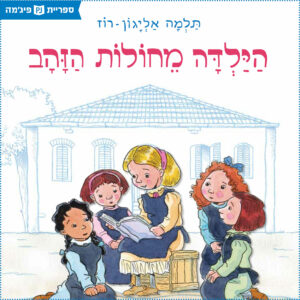 The Girl From The Golden Sands
The Girl From The Golden Sands 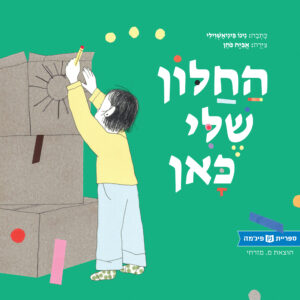 My Window is Here
My Window is Here 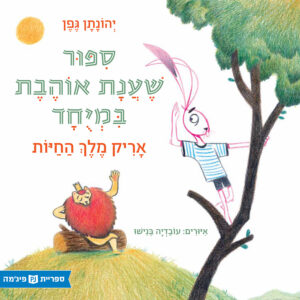 A Story that Anat Especially Likes
A Story that Anat Especially Likes 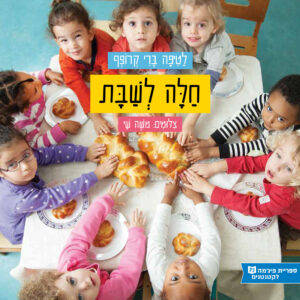 It’s Challah Time!
It’s Challah Time! 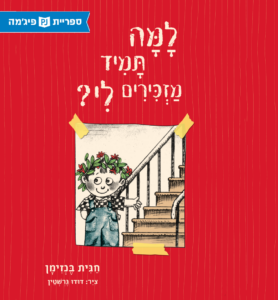 Why Do They Always Remind Me?
Why Do They Always Remind Me? 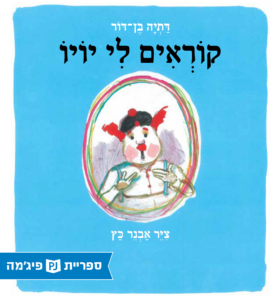 My Name is Yoyo
My Name is Yoyo 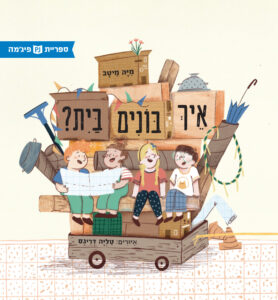 How to Build a House
How to Build a House 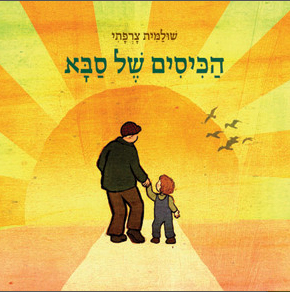 Grandpa’s Pockets – For Families
Grandpa’s Pockets – For Families 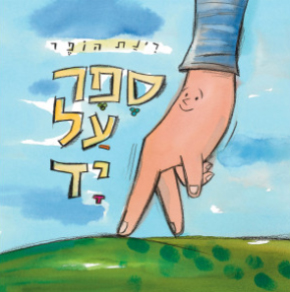 A book about A hand
A book about A hand 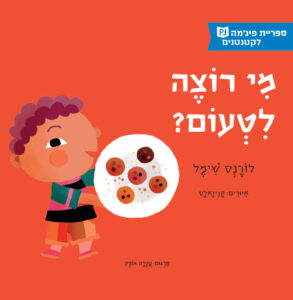 Who wants to taste?
Who wants to taste? 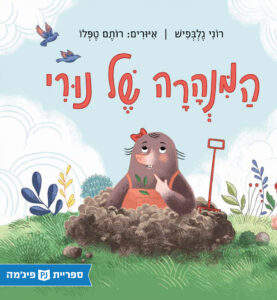 Nuri’s Tunnel
Nuri’s Tunnel 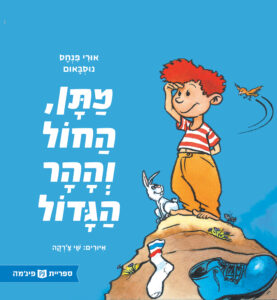 Matan and the Great Sand Mountain
Matan and the Great Sand Mountain 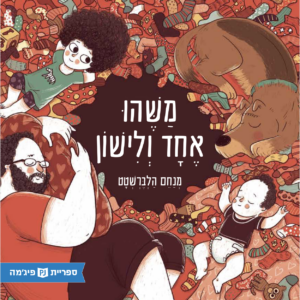 One Last Thing before Bed
One Last Thing before Bed 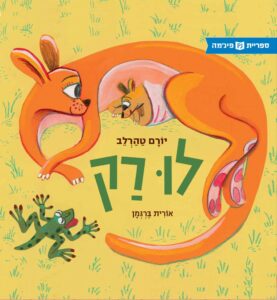 If Only
If Only 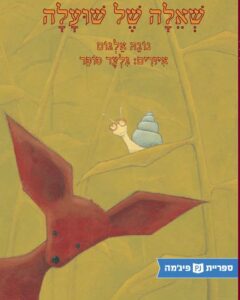 Why Not?
Why Not? 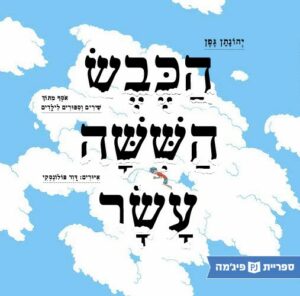 The Sixteenth Sheep
The Sixteenth Sheep 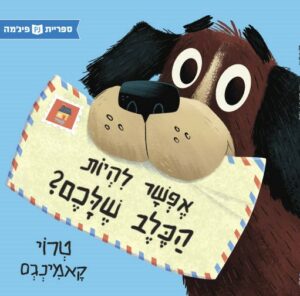 Can I Be your Dog?
Can I Be your Dog? 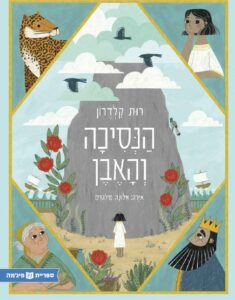 The Princess and the Rock
The Princess and the Rock 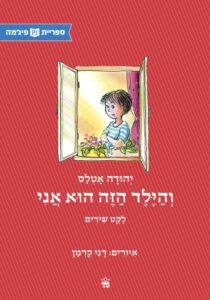 It’s Me
It’s Me 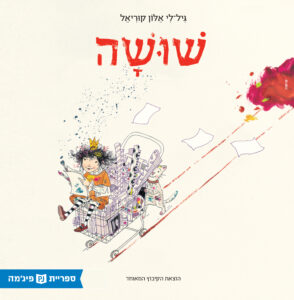 Shusha
Shusha 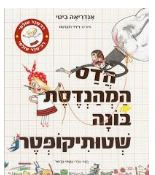 Rosie Revere, Engineer
Rosie Revere, Engineer 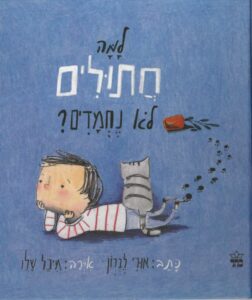 Why aren’t Cats Nice?
Why aren’t Cats Nice? 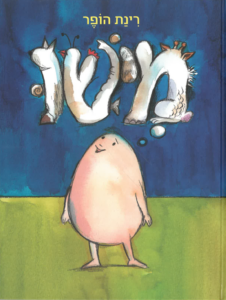 Somebody
Somebody 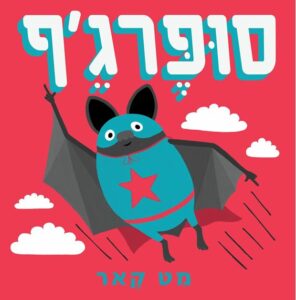 Superbat
Superbat 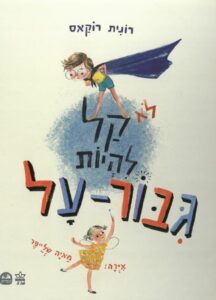 It’s not Easy to be a Super Hero
It’s not Easy to be a Super Hero 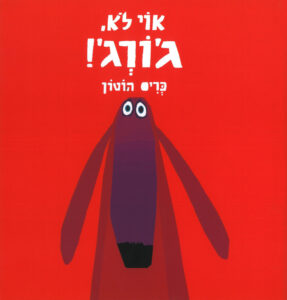 Oh No, George!
Oh No, George! 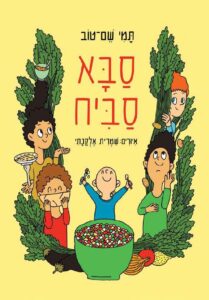 Sabba Sabich
Sabba Sabich 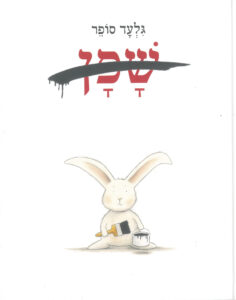 Shafan (Hyrax)
Shafan (Hyrax) 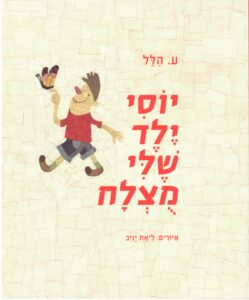 YOSSI, MY WONDERFUL CHILD
YOSSI, MY WONDERFUL CHILD 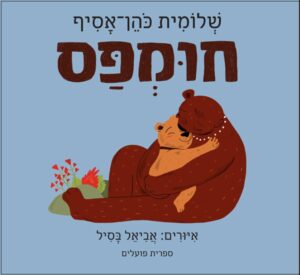 Brownstripe the Bear
Brownstripe the Bear 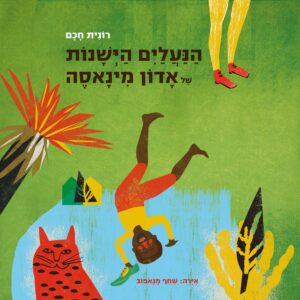 An Old Pair of Shoes
An Old Pair of Shoes 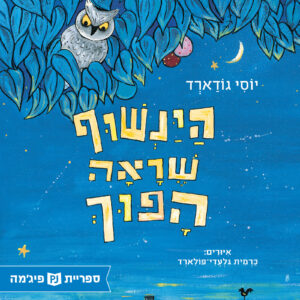 The Backward Owl
The Backward Owl 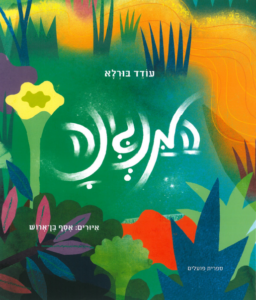 The Melody
The Melody 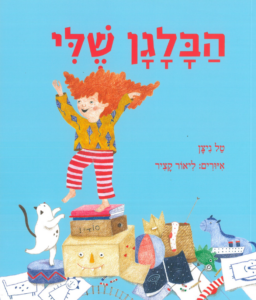 My Mess
My Mess 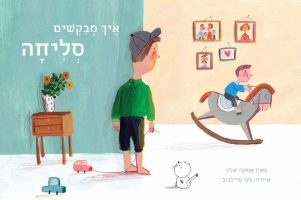 How do you say “I’m sorry”?
How do you say “I’m sorry”? 











